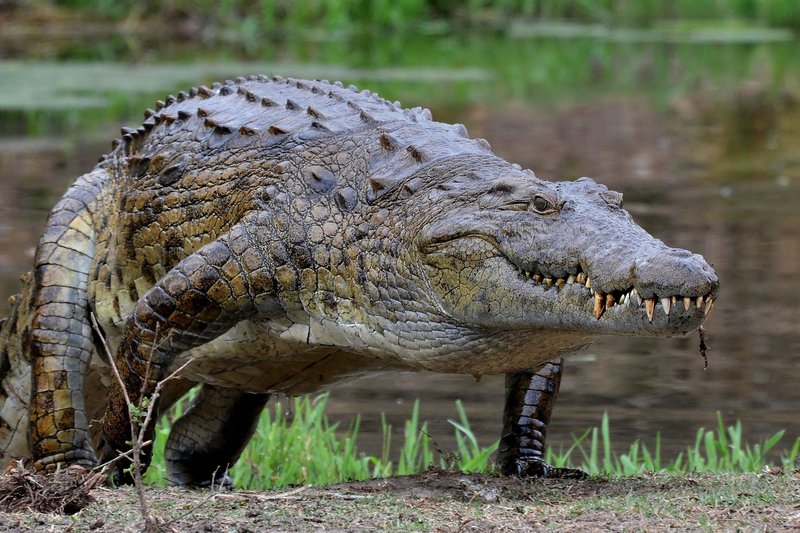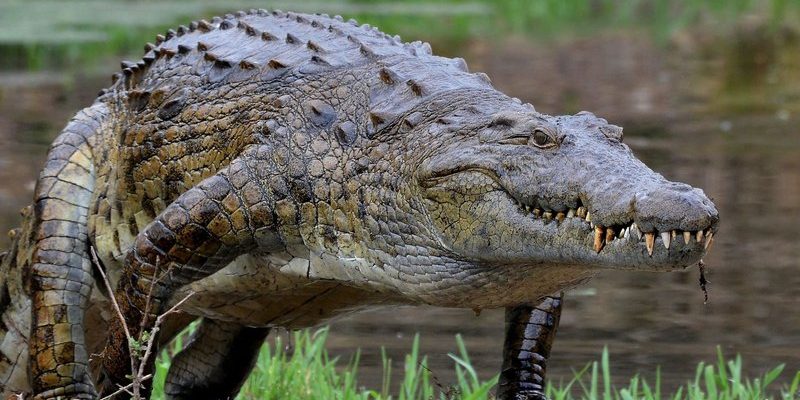
So, what makes crocodiles so unique? Let’s dive into some fun facts and surprising truths about these remarkable animals. By the end of this article, you’ll probably have a new appreciation for these scaly beasts—maybe even a desire to learn more about them!
Crocodiles Are Older Than Dinosaurs
You might think of dinosaurs as the ultimate ancient creatures, but guess what? Crocodiles have been around longer than the dinosaurs! They first appeared around 200 million years ago, during the late Triassic period. By the time the dinosaurs emerged, crocodiles were already on the scene. So, while the T-Rex was ruling the land, there were already crocodiles swimming in the waters.
Today’s crocodiles are often referred to as “living fossils” because they haven’t really changed much over the eons. Their body shape, hunting techniques, and even their social behaviors are quite similar to their ancient ancestors. Isn’t it wild to think that these creatures have seen the rise and fall of so many species, including the mighty dinosaurs?
They Have a Powerful Bite
When it comes to bite force, crocodiles reign supreme. In fact, they have the strongest bite of any animal on the planet. Some species, like the saltwater crocodile, can exert a jaw pressure of over 3,700 pounds per square inch! That’s enough force to crush bone like it’s nothing.
This immense biting power is mainly due to the structure of their jaws. Crocodiles have large, powerful muscles that allow them to close their mouths with incredible force. However, interestingly, their jaw muscles aren’t as strong when it comes to opening their mouths. You might be wondering how that works. It’s simple: their jaws are built for hunting and holding prey tightly, not for opening wide. This unique feature is why you can sometimes see crocodiles with their mouths wide open—it’s not a sign of aggression, just a way to cool down!
Crocodiles Are Surprisingly Social
You might picture crocodiles as solitary hunters, but here’s the thing: they actually enjoy the company of their fellow crocs. While they aren’t exactly the life of the party, these reptiles can form social bonds, especially during the breeding season. They often congregate in groups, and researchers have observed them basking in the sun together, communicating with various vocalizations, and even engaging in playful behavior.
Crocodiles have a range of vocalizations they use to communicate. They can hiss, growl, bellow, and even make softer sounds to signal different moods. For instance, hatchlings will emit distress calls to alert their mothers when they feel threatened. It’s heartwarming, in a reptilian kind of way!
Their Eyes Are Like Built-in Cameras
Crocodiles are equipped with some incredible adaptations, and their eyes are a prime example. These reptiles have a special membrane that can cover their eyes when they’re submerged underwater, acting like a pair of goggles. This adaptation helps them see clearly while remaining hidden from potential prey.
But it doesn’t stop there! Crocodiles also have excellent night vision, allowing them to hunt effectively after dark. This is important, especially since many of their favorite meals are more active at night. Imagine being able to see in the dark while lurking just below the water’s surface—pretty impressive, right?
They Can Hold Their Breath for a Long Time
Crocodiles are expert divers. They can hold their breath for an astonishing amount of time—anywhere from 30 minutes to over an hour, depending on the species and activity level. This ability comes in handy when hunting, as they can sneak up on prey while remaining submerged and undetected.
When they dive, crocodiles slow their heart rates to conserve oxygen, allowing them to stay underwater longer. It’s a clever survival tactic! And if you ever see a crocodile submerged for a while, don’t worry; they’re probably just taking a leisurely swim or watching for their next meal.
They’re Parents Too!
Despite their fierce reputation, crocodiles can be dedicated parents. The female crocodile often lays between 20 to 80 eggs, depending on the species. After laying her eggs, she carefully buries them in sand or vegetation, creating a protective nest.
Once the eggs start to hatch, the mother crocodile is there to help. She can detect the hatchlings’ distress calls and will gently dig them out of the nest. Then, she’ll carry them to the water in her mouth, offering a safe journey to their new home. Isn’t it sweet to think that these mighty reptiles have a softer side when it comes to their young?
Crocodiles Have a Distinct Diet
You might assume that all reptiles are strictly carnivorous, but crocodiles have a diverse diet. While they primarily eat meat—like fish, birds, and mammals—they also have been known to munch on fruit and plants. This behavior is particularly seen in some species that enjoy a snack of mangroves or other vegetation.
Crocodiles are opportunistic feeders, meaning they’ll eat whatever is available. They can go long periods without food, relying on their fat reserves during lean times. This makes them adaptable hunters, and they excel in catching prey using stealth and surprise.
They’re Not All Created Equal
Crocodiles come in various species, each with its own unique traits and preferences. The most well-known types include the American crocodile, saltwater crocodile, and Nile crocodile, but there are more than 15 different species worldwide. Each has different habitats, sizes, and diets.
For example, while saltwater crocodiles can grow up to 23 feet long and are found in coastal areas, the dwarf crocodile is much smaller, averaging around 5 to 6 feet. Understanding these species helps us appreciate the incredible diversity within the crocodile family and their adaptations to different environments.
In conclusion, crocodiles are far more than just fearsome predators. They play crucial roles in their ecosystems, are surprisingly social, and even embody impressive parental instincts. The next time you think about crocodiles, remember that there’s so much more beneath the surface—like the water where they thrive. Here’s to these ancient creatures still captivating our hearts and minds!

